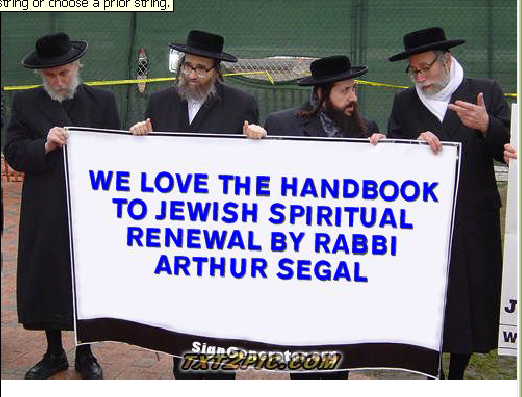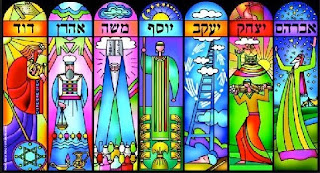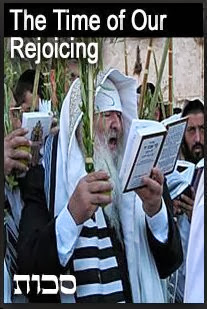Sukkoth
Selected Readings:
Leviticus 22:26-23:44
Numbers 29:12-16
Zechariah 14:1-21
I Kings 8:2-21
www.JewishSpiritualRenewal.com/books www.FaceBook.com/Arthur.L.Segal www.FaceBook.com/RabbiArthurSegalJewishSpiritualRenewal www.RabbiArthurSegal.blogspot.com
Jewish Spiritual Renewal
Jewish Renewal
Jewish Spirituality
Hilton Head Island, SC; Bluffton, SC; Savannah, GA''LITTLE HOUSES MADE OF TICKY TACKY''
The special readings from Numbers and Leviticus give the laws of the Sukkoth holiday. The chapter in Kings tells us how King Solomon celebrated Sukkoth, while the chapter in Zechariah uses the booth as an analogy to God's rescuing and sheltering us from warring neighbors.
The Torah in Leviticus 23:39 says, "On the fifteenth of the seventh month, when you gather in the crop of the land, you shall celebrate God's festival for a seven day period: the first day is a rest day and the eighth day is a rest day. You shall take for yourselves on the first day, a fruit of a beautiful tree, the branches of date palms, twigs of a plaited tree, and brook willows, and you shall rejoice before your God for a seven-day period...it is an eternal decree. You shall dwell in booths for a seven-day period; every native in Israel shall dwell in booths. So that your generations will know that I caused the children o Israel to dwell in booths when I took them from the land of Egypt..."
Traditionally Sukkoth reminds us how God provided shelter during our 40 years of wandering in the wilderness. Sukkoth is the time to rejoice in our wellbeing and to give thanks to God. It is sometimes called the "Jewish Thanksgiving." Some historians have written that the Pilgrim fathers of our United States of America fashioned their first Thanksgiving feast after this Biblical holiday. Sukkoth is also called chag ha asif (the harvest festival), and is the only holiday called ziman simchatanu (the time of our joy). The summer's produce is gathered, so therefore we know we can physically go on eating and living. The High Holy days are over, and we know that, traditionally speaking, our lives have been granted to us for another year by God.
The Midrash and Talmud, as we have seen with all holidays described in short verses in the Torah, expand the rules. Most important to them, the rabbis write pages on how to construct a sukkah – the booths described in Leviticus 23:39. They discuss the minimal number of walls, the height and thickness of the walls, the construction of the roof, and the materials to be used. They determine that this unspecified "fruit from a beautiful tree" must be a citron (etrog in Hebrew). This is a lemon-like fruit. They say that the four species mentioned symbolize the unity of us as individuals. The etrog symbolizes the heart. The lulav (palm branch) is the spine. The hadasim (myrtle leaves) are the eyes. The aravot (willow branches) are the lips. When we hold all four together, we are reminded that all parts of us must be integrated to lead ethical lives.
The Midrash gives another lesson. It says that the etrog, which tastes and smells pleasant, symbolizes one who studies and does good deeds. The lulav, whose fruit, the date, tastes good but has no aroma, is like one who studies but does not do good deeds. The myrtle, which has no taste but smells good, is like one who does not study but does good deeds. The willow has neither taste nor smell. It symbolizes one who does neither study or good deeds. The Midrash teaches that we hold these all together to remember that everyone is beloved by God and that a loving community is made up all of sorts of people.
When you are physically in a sukkah at night and your body lacks the comforts you are used to inside your home, it is very easy to ask what crucial lesson is learned from leaving the security and protection of our homes to go live in this hut. The Talmud Bavli, in Tractate Sukkah 11B, says that these booths serve to remind us of two things: either the temporary dwellings in which we lived in the desert, or the Clouds of Glory that protected us in the desert. By building flimsy booths covered with roofs that one can see through made with schach, we are reminded of the fragility of our existence and how lucky we are to have shelter that we sometimes take for granted. In a modern spiritual and renewal Jewish, tikun olam (repair of the world) sense, this may be a good time of year to remember the homeless in our cities who have no shelter and would look at these ticky-tacky huts as luxury dwellings.
The Talmud states that the roof must be made of loose earth-grown materials. However, the walls can be made of anything and can be completely enclosing. Rabbi Samson Hirsch, of 19th-century Germany, says that even though a rich man's walls may be built with metal and the poor man's wall built with old wooden boards, they are both subject to the same weather from above. These booths remind us that the comfortable walls we build for ourselves, as well as the titles and material wealth that we collect, are all just illusionary, false securities. It takes a lot of faith for a modern, soft suburbanite Jew to sleep in a sukkah, fending off humidity, rain, and bugs if one lives down south, or suffering through the autumn chills of night if one lives up north.
The Talmud also teaches that one must build a new sukkah each year. This is to remind us that the world is constantly undergoing renewal. Everything is always new and we should never take any condition for granted, but learn to adapt. The schach must be porous enough that one can see the stars through it, but opaque enough that one cannot look clearly at the constellations (mozel) and think that luck (as in mozel tov, commonly used Hebrew-Yiddish expression for good luck) will see him through these seven nights.
Another custom is to welcome a special guest from our past on each night of Sukkoth. We are taught in the Midrash that not only does the Divine Presence, the Shechinah, dwell with us, but that She comes with seven "faithful shepherds." These ushpizin (Aramaic for guests) come visit us, one each night. Who are they? They are Abraham, Isaac, Jacob, Joseph, Moses, Aaron, and David. Each one of these men left the comforts of their surroundings and lived in temporary shelters. Kaballistically, each guest represents a character trait of God on the sefirot tree. For example, Abraham is chesed (loving kindness), Isaac is gevurah (spiritual strength), and Jacob is tiferet (spiritual glory). For spiritual Jews, this is a significant custom that reminds us of the attributes we should try to emulate to become better partners with God in Tikun Olam. Besides these spiritual guests, it is customary to invite a different human guest to your sukkah each night.
The rabbis, in Tractate Avodah Zarah, speak of living in a sukkah for a week as being the ultimate test for modern man to show his faith in God. They tell of the time of the "final redemption," when idol worshippers will say, "Please, God, do not send us to Hell. If we were given the Torah, we would have accepted it also!" The rabbis say that God makes a deal with them. He says He will give them just one of the 613 commandments He gave the Jews. If they fulfill this one mitzvah, they will enter olam haba (the world to come). They are told to live in a sukkah for a week.
The Talmud says that when the noon sun beats through the schach, the idol worshippers will "kick down the walls and flee in disgust." This story is mentioned to help modern Jews who see no benefit to the sukkah mitzvoth as a way of appreciating God's bounty and gaining some insight into Jewish spirituality, even if it is for one outside meal during the weeklong holiday.
Verse 23:37 of Leviticus mentions doing "a feast offering and its libation." During the Temple time, a unique offering was brought to the altar during Sukkoth. Each morning a water libation was poured over the altar. This pouring of water was called nisuch hamayim." It was celebrated with much fanfare. Masses of people would gather to dance, sing, perform, and throw precious water on each other. Special mammoth lamps were lit so that the party could go on all night. These lamps were great golden menorahs set on bases fifty yards high. Each menorah had four branches terminating in huge cups filled with oil. Four ladders were placed against each menorah and four young priests continually ascended these ladders to keep oil in the cups and to keep the fires burning. The wicks were made from worn garments of the priests. The Talmud records that these lamps illuminated all of Jerusalem.
This celebration was held every night of Sukkoth except for Shabbat and the first night. The rabbis wrote in Tractate Sukkoth 51A, "whoever did not see this celebration never saw a celebration." This weeklong party was known as Simchat Bait ha Sho'eva (the Rejoicing of the House of the Drawing).
The prophet Amos (5:21-27) writes that he visited the Temple during Sukkoth and the revelry that he saw made such an unfavorable impression upon him that he condemned the Temple and the entire ritual. Hosea (9:01), another prophet, also protested the bacchanalia atmosphere. Isaiah (28:7-8) tells us that even the priests were drunk in the sanctuary. He writes: "they are confused because of wine, they stagger because of strong drink." And these were the Levites and Kohanim! I leave it to your imagination to think of how the other tribes' members were misbehaving.
Water was, and still is, a precious commodity in the Middle East. Just as the Talmud Bavli says we are judged on Rosh Hashanah, it says the world is judged as well (Tractate Rosh Hashanah 16A). We bring a water offering to ask God to give us rain for our crops. However, since we are living in booths, it is considered a curse by God if it rains during Sukkoth (Tractate Sukkoth 28B). During the harvest season, some farmers do better than others. Even though Yom Kippur is only a week before Sukkoth, some people will think they are better than others based on their wealth. The water ceremony reminds us that we are all dependent on the same basic things to sustain life: water, food, and shelter. As we learn when we hold the four species, we are all interconnected and all dependent on the same things. Even the garments that some use to distinguish classes were useless during these ceremonies. Everybody got wet and frankly, their garments became see-through. As many of us know from our days in a public high school locker room, it is very hard to act haughty when one is naked. This is the only time the Talmud mentions that men and women celebrated separately because of diaphanous clothing.
Rabbi Michael Cohen compares Yom Kippur with Sukkoth. He says Sukkoth counterbalances Yom Kippur. Yom Kippur is heavy and serious. Sukkoth is light and joyous. Yom Kippur takes place on the inside. Sukkoth takes place on the outside. We fast on Yom Kippur and feast on Sukkoth. On Yom Kippur we pray with our minds. On Sukkoth we build with our bodies. On Yom Kippur we hold a book in our hands. On Sukkoth we hold a lulav and etrog in our hands. On Yom Kippur we are serious and reflective. On Sukkoth we are joyful.
Isaac Luria, the 16th century Kabbalist, instructed his students that their cultivation of joy is a prerequisite for attaining mystical illumination. When Jews come to services only on Yom Kippur or Rosh Hashanah, they are missing out on the joys of Judaism. Both holidays are necessary, just as both work and play are needed in a balanced life. Sukkoth is a time of rejoicing and being thankful for the blessings we have. As we spend time in our booths, let us think of ways we can liberate those who are permanently dwelling in huts, or less. The best way of saying thank you for God's bounty is to share it with others. This is how, in the words of the prophet Zechariah, we can fulfill his wish of, "And the Lord shall be King over all the earth, on that day shall the Lord be One, and his Name One." (Zech. 14:09).
RABBI DR ARTHUR SEGAL www.JewishSpiritualRenewal.com/books www.FaceBook.com/Arthur.L.Segal www.FaceBook.com/RabbiArthurSegalJewishSpiritualRenewal www.RabbiArthurSegal.blogspot.com
Jewish Spiritual Renewal
Jewish Renewal
Jewish Spirituality
Hilton Head Island, SC; Bluffton, SC; Savannah, GAIf visiting SC's Low Country, contact us for a Shabbat meal, in our home by the sea, our beth yam.Maker of Shalom (Oseh Shalom) help make us deserving of Shalom beyond all human comprehension
Sunday, September 15, 2013
LIVING IN A SUKKAH SHOWS FAITH IN GOD: ECO-JUDAISM :RABBI ARTHUR SEGAL
LIVING IN A SUKKAH SHOWS FAITH IN GOD: ECO-JUDAISM : RABBI ARTHUR SEGAL










